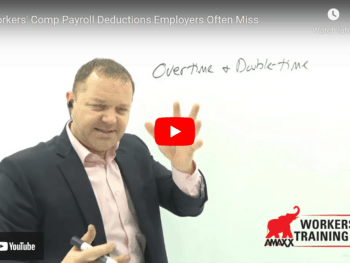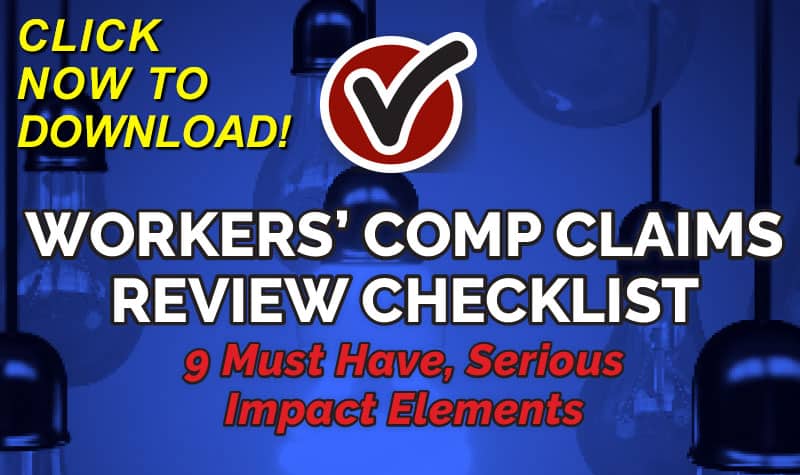When used properly, transferring risk for workers compensation exposure and losses can be an excellent tool for cost control. One such tool is known as Waiver of Statutory Immunity.
A Waiver of Statutory Immunity is: the abandonment, relinquishment, rejection, renunciation, surrender, release, cancelation, or loss (by implied conduct) of any known statutory or contractual legal right. There are dozens of legal phrases outlining the various types of waiver and additional definitions.
While most waivers of immunity are in the construction industry, any employer using Sub- Contractors, Professional Employee Contractors, Leased Employee Vendors, Volunteers, Individual Specialists, or Temporary Help Agencies can face similar exposures. The purpose is these entities take over exposures from the entity using their services.
Governments generally have almost full Statutory Immunity for negligence by either constitutional or legislative act. Yet, if the loss is egregious enough, has major impact, or is not properly asserted, this immunity can be lost.
Hold Harmless and indemnification contracts (with or without Statutory Waiver) not properly written and designed to meet normal public practices, can held null and void by the courts, and/or workers compensation judicial ruling.
For purposes of this discussion two descriptions will apply. Indemnitee is the person or organization wanting to transfer risk. Indemnitor: is the person or organization assuming or taking the risk.
Click Link to Access Free PDF Download
“Workers’ Comp Claims Review Checklist: 9 Must-Have, Serious-Impact Elements”
Example of Exposure:
Company A (the Indemnitee) hires company B (the Indemnitor) to perform some computer adjustments. The work is done on A’s premises. A and B entered into contract with a standard hold harmless and indemnification agreement. B also furnishes insurance endorsements naming A as an also insured.
Company B’s employee is injured and alleges A to have been negligent and cause of the injury. B’s employee is paid compensation benefits by B’s insurance carrier.
B’s employee then sues A for negligence.
A, relying on the hold harmless clause and endorsements for liability coverage turns the lawsuit over to B for defense and disposition.
A is astounded when B’s liability carrier uses employer immunity as defense since B’s workers’ compensation carrier paid benefits. Because the hold harmless and indemnity clause did not have a Waiver of Statutory Immunity, A is left without defense or coverage under B’s liability policy.
A may be denied coverage under its insurance policies. A’s carriers may assert that A made its own assumption of risk.
The situation can be progressively worse depending on the number and type of insurance carriers, and parties involved, but most of these cases are resolved without lengthy litigation. Records show that Indemnitees generally lose the most in exposure and cost.
There are numerous situations where Statutory Immunity is lost. A few are:
- Violation of Public Practice.
- Late Reporting.
- Failure to properly assert.
- Vague or Cross interpretation of contract wording.
- Missing litigation time tables.
- Judicial or Administrative Ruling
- Indemnitor fails to Waive Immunity in proper written format.
Manuscript Policy
Standard insurance policies are seldom written to extend coverage for Waivers of Immunity, and State Insurance Departments may not have premium structures for the coverage. Few carriers recognize waivers without specific endorsement, therefore, a manuscript policy may be necessary.
A Manuscript Policy is written to conform to tailored needs of the insured, or joint venture. Policies can grant coverage for almost every legal operation. Premiums may be negotiable, and shared among the various entities. The policy generally defines every entity exposures and limits, and will define how the insured is to comply with the policy provisions. The policy is generally written for a single use and will expire or be cancelled when the use is completed. An extending endorsement may be added to allow for injuries or claims incurred but not reported.
Most agents, brokers, and underwriters are not experienced enough to write a manuscript policy, therefore, a manuscript policy is usually prepared by the home office insurance carrier department. The same will apply to endorsements accepting Waivers of Immunity.
Manuscript policies are seldom offered to smaller organizations as premiums are generally expensive or have high retention limits. Such retentions may be spread across all participants, therefore, it will be crucial that all participants are fiscally sound enough to absorb their share of retentions.
Summary:
Obtaining a Waiver of Immunity from another is a good way to transfer and protect against workers’ compensation claims and subrogation challenges by non-employees, or independent contractor relationships. However, they must be prepared by properly experience lawyers, in conjunction with all entities and insurance carriers.
Author Michael Stack, Principal, COMPClub, Amaxx LLC. He is an expert in workers compensation cost containment systems and helps employers reduce their work comp costs by 20% to 50%. He works as a consultant to large and mid-market clients, is co-author of Your Ultimate Guide To Mastering Workers Comp Costs, a comprehensive step-by-step manual of cost containment strategies based on hands-on field experience, and is founder of COMPClub, an exclusive member training program on workers compensation cost containment best practices. Through these platforms he is in the trenches on a working together with clients to implement and define best practices, which allows him to continuously be at the forefront of innovation and thought leadership in workers’ compensation cost containment. Contact: mstack@reduceyourworkerscomp.com.
©2016 Amaxx LLC. All rights reserved under International Copyright Law.
Do not use this information without independent verification. All state laws vary. You should consult with your insurance broker, attorney, or qualified professional.











